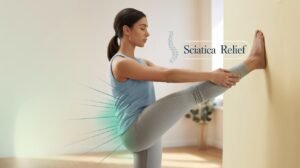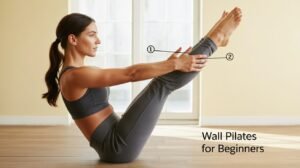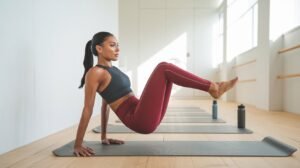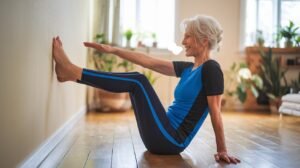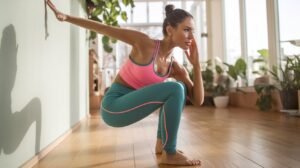Introduction
Embarking on a fitness journey can be both exciting and daunting, especially for beginners. Wall Pilates offers a gentle yet effective introduction to exercise, focusing on building strength, flexibility, and balance. This article will guide you through the basics of wall Pilates, helping you understand its benefits, how to get started, and some essential exercises to begin your practice.
Table of Content
- What is Wall Pilates?, Definition, Origins, Key principles.
- Benefits of Wall Pilates for Beginners, Physical benefits, Mental benefits, Long-term impact.
- Getting Started with Wall Pilates, Essential equipment, Setting up your space, Basic safety tips.
- Basic Wall Pilates Exercises, Wall roll-down, Wall squats, Wall push-ups, Wall leg raises.
- Tips for Success in Wall Pilates, Consistency, Proper form, Listening to your body.
- Common Mistakes to Avoid, Incorrect alignment, Overexertion, Neglecting warm-up and cool-down.
- Wall Pilates for Different Fitness Levels, Modifications for beginners, Intermediate challenges, Advanced variations.
- Incorporating Wall Pilates into Your Routine, Creating a schedule, Combining with other workouts, Progress tracking.
- FAQs about Wall Pilates for Beginners, Frequency, Duration, Suitability for different ages and fitness levels.
- Conclusion, Recap of benefits, Encouragement to start, Final tips
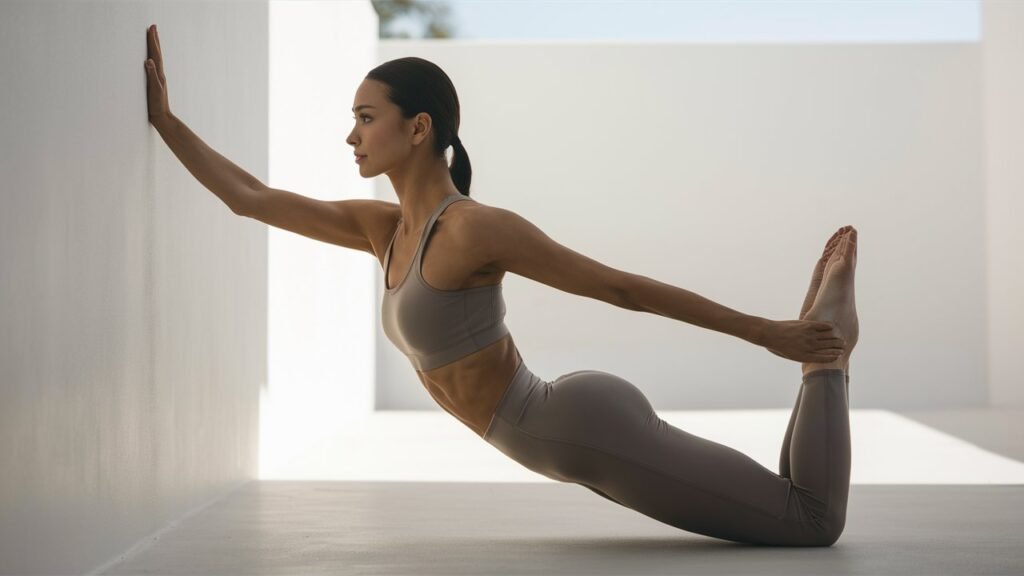
What is Wall Pilates?
Wall Pilates is a form of Pilates that uses a wall as a prop to assist with exercises. Originating from the traditional Pilates method developed by Joseph Pilates in the early 20th century, wall Pilates emphasizes controlled movements, proper alignment, and breathing. The wall provides support and resistance, making it an excellent option for beginners to develop core strength and improve posture.
Benefits of Wall Pilates for Beginners :
Physical Benefits
Wall Pilates offers numerous physical benefits, including :
- Improved Core Strength : The exercises target the core muscles, enhancing overall stability and strength.
- Increased Flexibility : Gentle stretches and movements help improve flexibility, reducing the risk of injuries.
- Better Posture : Focusing on alignment and form helps correct postural issues and promotes better body mechanics.
- Enhanced Balance and Coordination : The wall provides support, allowing beginners to perform balance exercises safely.
Mental Benefits
In addition to physical benefits, wall Pilates also supports mental well-being :
- Stress Reduction : Controlled breathing and mindful movements promote relaxation and reduce stress levels.
- Increased Focus : Concentrating on form and technique enhances mental clarity and focus.
- Boosted Confidence : Progress in physical abilities can boost self-esteem and confidence.
Long-term Impact
Practicing wall Pilates regularly can lead to long-term health benefits, such as improved muscle tone, joint health, and overall fitness. It also lays a solid foundation for advancing to more complex Pilates exercises or other forms of physical activity.
Getting Started with Wall Pilates
Essential Equipment
To start wall Pilates, you’ll need minimal equipment :
- A Stable Wall : Ensure the wall you’re using is sturdy and free from obstacles.
- Yoga Mat : Provides cushioning and support for floor exercises.
- Comfortable Clothing : Wear clothes that allow for easy movement.
Setting Up Your Space
Create a dedicated space for your Pilates practice :
- Clear the Area : Ensure there is enough space around the wall for you to move freely.
- Adequate Lighting : Good lighting helps you see your form and maintain proper alignment.
Basic Safety Tips
Prioritize safety to avoid injuries :
- Warm-Up : Start with a gentle warm-up to prepare your muscles.
- Listen to Your Body : Pay attention to how your body feels and avoid pushing through pain.
- Stay Hydrated : Drink water before, during, and after your workout.

Basic Wall Pilates Exercises
Wall Roll-Down
- Stand with your back against the wall, feet hip-width apart.
- Slowly roll down vertebra by vertebra, reaching towards your toes.
- Roll back up with control, maintaining contact with the wall.
Wall Squats
- Stand with your back against the wall, feet slightly forward.
- Slide down into a squat position, thighs parallel to the ground.
- Hold for a few seconds, then slowly return to the starting position.
Wall Push-Ups
- Place your hands on the wall at shoulder height and width.
- Step back, keeping your body in a straight line.
- Bend your elbows to lower your chest towards the wall, then push back to the starting position.
Wall Leg Raises
- Stand with one side of your body against the wall for support.
- Lift your outer leg to the side, keeping it straight.
- Lower it back down with control, then repeat on the other side.
Tips for Success in Wall Pilates
Consistency
Regular practice is key to seeing results. Aim for at least 2-3 sessions per week.
Proper Form
Focus on maintaining correct form and alignment to maximize benefits and prevent injuries.
Listening to Your Body
Pay attention to your body’s signals and modify exercises as needed to suit your comfort level.
Common Mistakes to Avoid
Incorrect Alignment
Ensure your body is correctly aligned with the wall to prevent strain and injury.
Overexertion
Avoid pushing yourself too hard, especially as a beginner. Progress gradually to more challenging exercises.
Neglecting Warm-Up and Cool-Down
Always include a warm-up before and a cool-down after your workout to prepare your muscles and aid recovery.
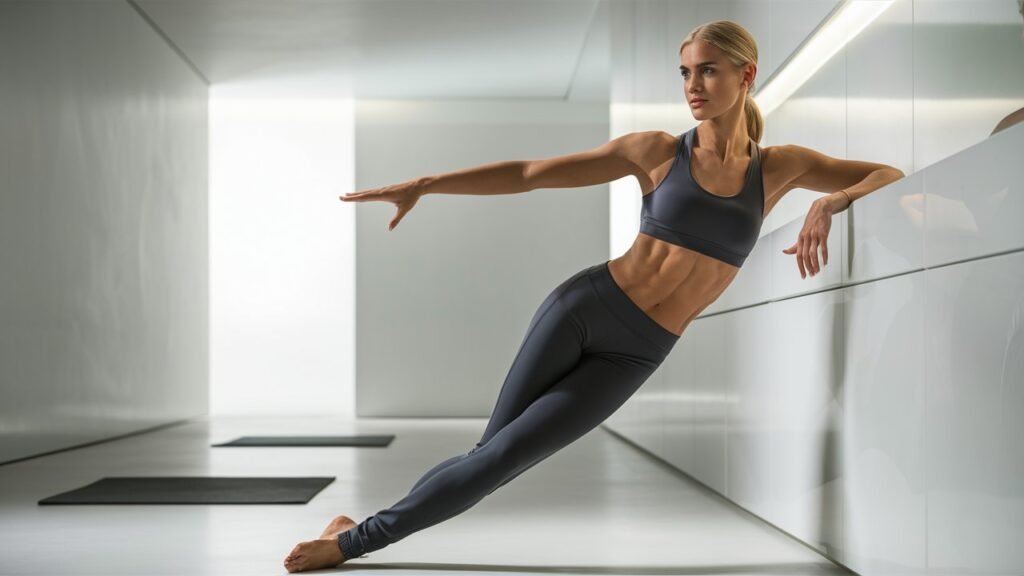
Wall Pilates for Different Fitness Levels
Modifications for Beginners
Start with simpler exercises and gradually increase the difficulty as you gain strength and confidence.
Intermediate Challenges
Incorporate more complex movements and increase the intensity to continue progressing.
Advanced Variations
For experienced practitioners, advanced variations and additional resistance can provide a greater challenge.
Incorporating Wall Pilates into Your Routine
Creating a Schedule
Set a regular schedule for your Pilates practice to maintain consistency.
Combining with Other Workouts
Combine wall Pilates with other forms of exercise, such as cardio or strength training, for a well-rounded fitness routine.
Progress Tracking
Keep track of your progress by noting improvements in strength, flexibility, and overall fitness.
FAQs about Wall Pilates for Beginners
How often should I do wall Pilates?
Aim for 2-3 times per week to start, gradually increasing frequency as you become more comfortable.
How long should a wall Pilates session last?
Begin with 20-30 minute sessions, extending the duration as you progress.
Is wall Pilates suitable for all ages?
Yes, wall Pilates can be adapted for different ages and fitness levels, making it accessible to a wide range of individuals.
Can I do wall Pilates if I have injuries?
Consult with a healthcare provider before starting if you have any injuries or medical conditions.
What should I wear for wall Pilates?
Wear comfortable clothing that allows for easy movement, such as leggings and a fitted top.
Do I need any special equipment for wall Pilates?
All you need is a stable wall, a yoga mat, and comfortable clothing to get started.
Conclusion
Wall Pilates offers a gentle, effective way for beginners to embark on their fitness journey. With its numerous physical and mental benefits, it’s an excellent addition to any wellness routine. Start with the basics, listen to your body, and enjoy the process of building strength, flexibility, and balance.


